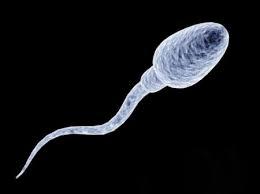
Is a Single Sperm Cell Evidence of a Sexual Assault?

Suzanna Ryan,
MS, D-ABC
Owner/Consultant at Ryan Forensic DNA Consulting.
What would you do if you were accused of molesting a child? How would you react if you found yourself in the unenviable and improbable position of being accused of the sexual assault of a child in your immediate family. This could be your own child, a foster child, a step-child, a grandchild. Regardless of the specific relation, the key fact is that you live in the same home as the alleged victim. If you are not guilty of these charges, surely you should have no reason to be concerned when the police seize the child’s underwear as evidence and your DNA for comparison purposes?
Most of the general public, I assume, would agree with this assessment. In fact, isn’t that what we hear time and again on the TV cop shows? “If you haven’t done anything wrong, you have nothing to worry about”.
Now imagine that you choose to cooperate with the authorities, you provide a DNA sample when requested because, remember, you have nothing to hide. Then the lab results come back. A sperm cell or two was found on the child’s underwear. And, not only that, male DNA was also present. Male DNA matching you. If this sounds impossible, I implore you to read on.
Real Life Cases:
Recently, I have had the opportunity to become involved as a forensic DNA consultant in several cases very similar to the scenario outlined above. In two of these cases, the sole piece of forensic evidence tying the defendant to the crime was the presence of one (in one case) or two (in the second case) sperm cells on the alleged victim’s underwear along with a mixed DNA profile that included the defendant as a possible contributor.
On the surface, the average person might well think that the defendants in these cases and others must be guilty as there couldn’t possibly be a reasonable explanation for sperm cells and male DNA, to be present on a young child’s underwear. Certainly, the presence of sperm on the underwear was likely one of the reasons that charges were being brought against the accused individuals to begin with. However, the presence of a few sperm cells on an item of clothing, even on item such as a child’s underwear – is not necessarily proof of a sexual assault.
Evidence Examination at the Lab:
The typical methodology involved with examining an item of evidence for the presence of semen in the forensic crime laboratory would involve the use of an alternate light source (ALS) to help visualize any stains not visible to the naked eye. It is important to know that, while the ALS is a powerful visualization tool, it is not a “test”, per se, and it’s usefulness is limited. While the presence of a fluorescing stain might very well indicate a biological fluid, fluorescence under an ALS can also be caused by background fluorescence of the fabric or even by laundry detergent. Even if the fluorescence is due to a biological fluid, one must be aware of the fact that many biological fluids – including semen, saliva, urine, vaginal fluid and sweat – all typically exhibit fluorescence. In the cases mentioned earlier, one of the pairs of underwear did show signs of fluorescence under the ALS and one did not. However, the underwear exhibiting the fluorescence was from a 4 year old child and had obvious yellowish staining present in the crotch area. Since urine is one of the body fluids that will fluoresce under an ALS, it is quite possible that the stain observed was a urine stain.
If any fluorescent areas are observed – and sometimes even if they are not – the analyst will take a cutting from the evidence item for presumptive testing. A common semen presumptive test is the Acid Phosphatase (AP) color change test. While semen contains a very high among of this enzyme, some AP false positives, including vaginal fluid, do exist so the presence of semen must be confirmed through microscopic examination and/or a P30 test. While neither of the pairs of underwear examined in the two cases mentioned above showed any AP activity, it should be kept in mind that AP activity in a pair of female underwear could easily be due to vaginal fluid, not semen.
P30, alternatively called Prostate Specific Antigen or PSA, is a protein found in very high concentrations in semen. When it was first described in the literature, P30 was thought to be found only in semen. However, as the sensitivity of the testing methods increased, scientists soon found P30 was present in body fluids other than just semen – including in some female body fluids.
Microscopic examination of a liquid extract of the sample for the presence of sperm cells is still considered the “gold standard” in terms of semen identification. Generally during the microscopic examination the analyst will note the relative number of sperm cells detected in the sample. Usually a rating system of 1+ to 4+ is used. 1+ would indicate that the sample is positive for sperm, but that sperm cells are difficult to find. 4+, on the other hand, would mean that the samples positive for sperm and many sperm cells are observed per microscopic field of view.
Generally speaking, if a stain is visualized and that stain is positive for AP and/or P30, and the presence of sperm cells has been confirmed through microscopic examination, this is proof positive that the stain on the evidence is a semen stain. What does it mean, however, if an item is negative for AP and/or P30, yet a few sperm cells are found on the evidence item? In this case, there is support for the fact that either the area being tested is a semen stain that has been laundered, or the area being tested is not a semen stain at all. AP is an enzyme that is water soluble and research has shown that when a semen stain is put through a normal washing machine wash cycle, the AP activity will be lost (Kafarowski, Farmen). In addition, P30 activity will typically be lost during a hot water wash cycle (Farmen and Hulme).
Negative AP and P30 results are significant in light of the fact that the AP test can detect semen diluted up to 1:2000 and the P30 test can detect semen in dilutions up to a million-fold (Hochmeister et al) and can retain activity for many years in a dried stain. Therefore the absence of these seminal constituents indicates that the tested area is either not a semen stain, or at the very least the area is not a fresh semen stain that has not gone through the wash.
As mentioned, in the absence of AP and/or P30 activity, it might be argued that the evidence samples being tested contained washed semen stains. However, if the suspect produces an average number of sperm cells per ejaculate, this hypothesis is not likely since the average ejaculate consists of anywhere from 200-600 million sperm cells (even a man considered “infertile’ can produce 10 million sperm cells per ejaculate!). In addition, research has shown that even after washing, semen stains can still contain large numbers of sperm cells (Kafarowski) in the stained area. Jobin and DeGauffe also found reduced but significant numbers of spermatozoa remaining on cotton panties after washing.
In fact, not only will sperm cells remain on the item, but it is possible for sperm cells from semen stains to be redistributed onto previously unstained items! Kafarowski found that when washing new, clean, underwear with a single pair of semen-stained underwear, sperm cells were located on each and every pair of underwear tested in numbers ranging from 1 to 8 sperm cells. In addition, a separate experiment carried out by Gerry Davidson of the Forensic Science Service showed the transfer of sperm cells to 4 out of 13 areas tested on clean underwear which had been stored and washed with semen-stained items. Interestingly, sperm cells were also located on an number of pairs of underwear which had NOT been stored or washed with semen-stained items indicating that sperm cells were present in the washing machine from prior wash cycles (a supposition that was confirmed by the presence of sperm cells on swabs taken from the washing machine door, drum, and seal) (Hulme).
Some forensic scientists might argue that if a male DNA profile is obtained from the sperm cell fraction of a sample which showed the presence of one or two sperm cells, that the profile must be from a semen stain. However, this is not necessarily the case. While it is not possible at this time to obtain a full DNA profile from a single sperm cell, it is possible to obtain a profile from an extremely small amount of DNA. So, if a male DNA profile is developed from a cutting of underwear that is AP negative and P30 negative, with only one or two sperm cells, where is the DNA coming from? Dr. Sarah Noël and her colleagues from the Laboratoire de Sciences Judiciaires et de Médecine Légale found that clean underwear washed with semen-stained items could, at times, yield a male DNA profile with anywhere from 1 – 6 nanograms of male DNA detected. In order to determine a baseline of foreign DNA that might be detected in children’s underwear, Dr. Noël’s group tested children’s underwear taken from three different staff member’s families. DNA from the child, the child’s siblings, the mother, and the father was found in the epithelial cell fraction in various concentrations and proportions. In the majority of the cuttings examined, no DNA was obtained from the sperm fraction, however in 6 of 56 samples tested a partial profile (7-17 alleles) matching the father of the child was detected, with the maximum amount of male DNA detected being 1 nanogram.
Based upon the results noted in these literature references, the question we, as forensic scientists and as member of the criminal justice system need to ask is “what does the presence of a single sperm cell mean?”. Does the presence of a sperm cell prove that a sexual assault has taken place? And, does the presence of male DNA in a child’s underwear illustrate that some sort of sexual contact has occurred? The answer, especially in regards to males that live in the same home as the alleged victim, is quite simply, no. It does not. The literature has shown that both sperm cells and DNA can transfer from one item of clothing to the next when laundered together. The sensitivity of the amplification kits and detection instruments currently in use in the crime lab have made the detection of trace amounts of DNA commonplace and the detection of male DNA on a child’s underwear is not necessarily surprising or at all unexpected. Care must be taken when interpreting what the presence of a few sperm cells truly means.
Literature Sources:
Kafarowski, E. et al. The retention and transfer of spermatozoa in clothing by machine washing. Can. Soc. Forens. Sci. J. V29 (1) 1996 7-11
Farmen, RK et al. Spermatozoa recovered on laundered clothing. FSI:Gen. Supp Ser. 1(2008)418-420
Hulme, J. Body Fluids Conference jointly hosted by the Forensic Science Society & the Centre for Forensic Investigation, University of Teesside: 18-19 April 2008 Convenors: Julie Allard and Brian Rankin. Science & Justice 50 (2010) 100-109.
Hochmeister, MN et al. Evaluation of prostate-specific antigen (PSA) membrane test assays for the forensic identification of seminal fluid. J. Forensic Sci. 1999: 44: p1057-1060.
Jobin and DeGauffe. Persistence of seminal constituents on panties after laundering: Significance to investigations of sexual assault. Can Soc. For. Sci. Vol36(1) pp 1-10.
Noël, S. et al. Intrafamily Sexual Assaults on Children: Have you Considered the Possibility of DNA Transfer in the Laundry? presented at ISHI25, October 2014.